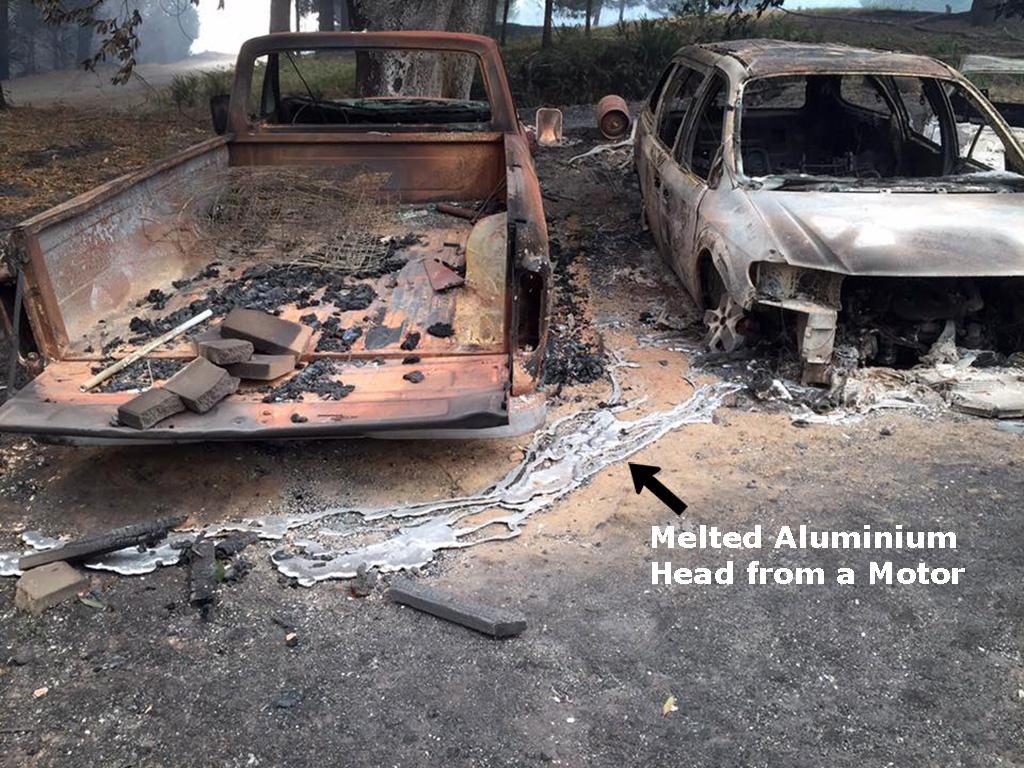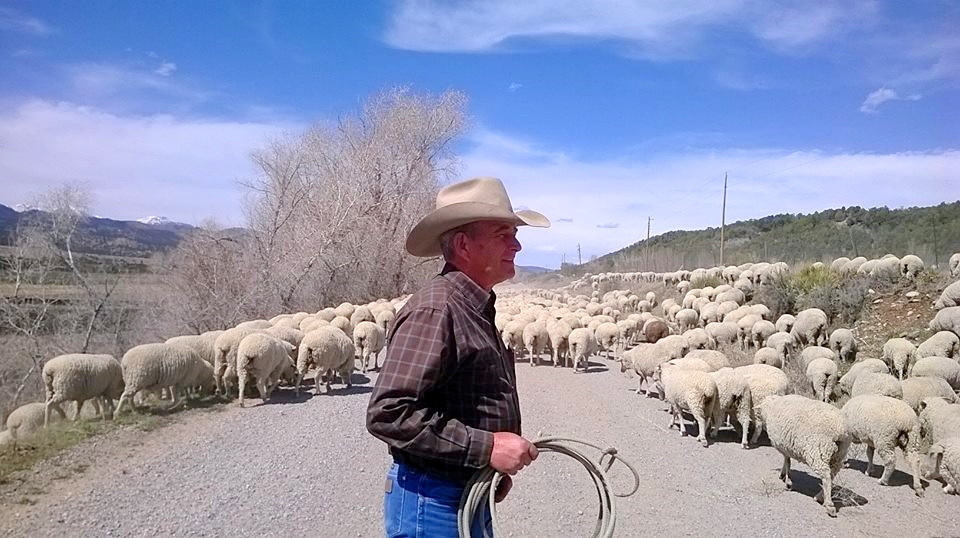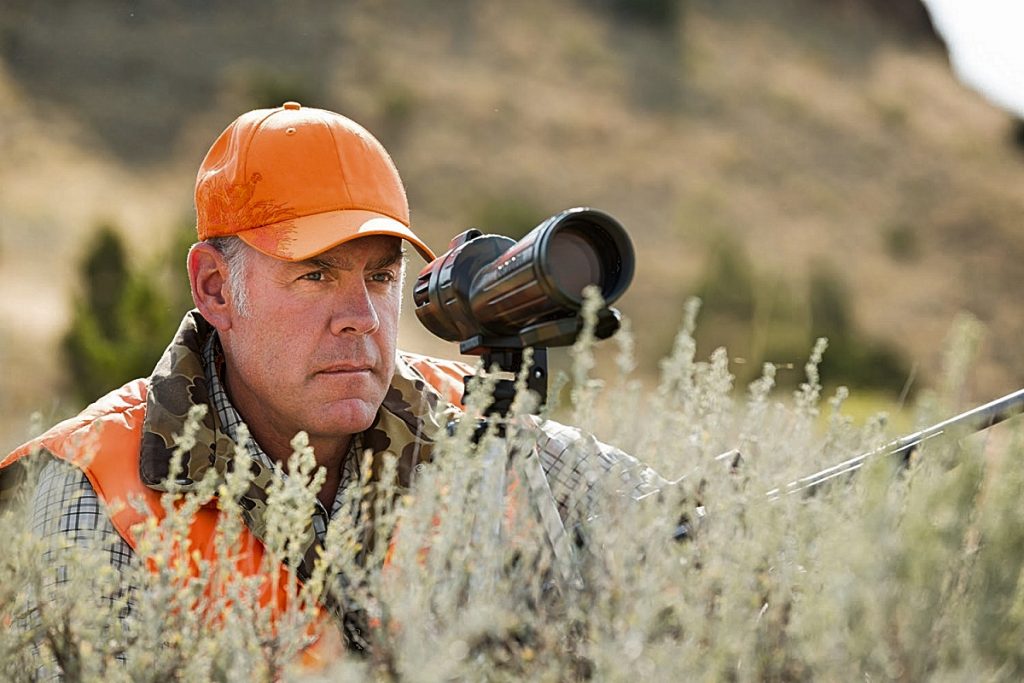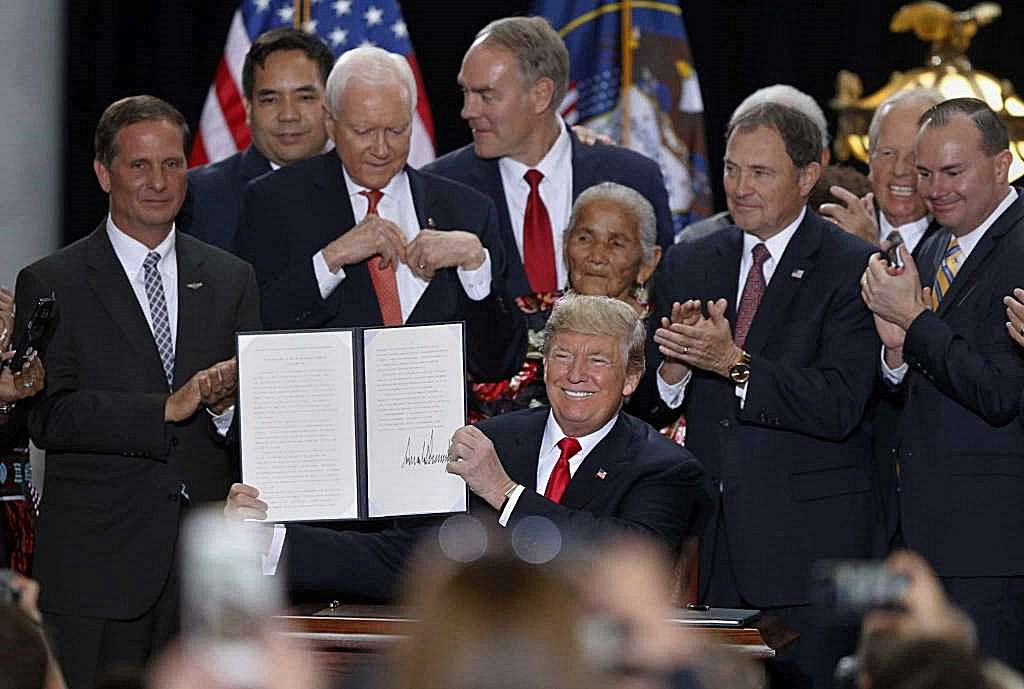Dozens of people were killed in these catastrophic wildfires, many thousands of homes and structures destroyed and the tragedy continues to this day as many thousands of people try to piece their lives back together having lost everything in many cases. All of which cost tens of $-billions of dollars.
Commentary by Capt. William E. Simpson II – USMM Ret.
Insurers Fleeing Wildfire Exposure
Will Our Children Inherit A Bleak Future?

It may be snowing outside in many places, but the summer wildfire season is now just 5-months away!
Given the obtuse rhetoric coming from the priesthood of the Let It Burn scientist-environmentalists who kiss the ring of grant-stream funding, our futures and that of our children and grandchildren may be very blackened and bleak.
In the photo above, we clearly see some of the total devastation from the Chetco Bar Fire, which was a ‘megafire’ (>100k acres) that erupted and was fueled primarily by dry grass and brush growing on the burn-scars of prior fires, as we read here:
“The fire ignited after a lightning strike on July 12 and spread along the burn scar where the Biscuit Fire burned in 2002, one of the largest in Oregon, and where the Silver Fire spread in 1987.”
The annual grass and brush of the burn-scars being the primary wildfire fuel made this fire so hot it melted aluminum as we see in the following photos, also provided as a courtesy by Katrina Thompson-Upton, whose family (Thompson residence) lost their home, possessions and a lot more in the Chetco Bar Fire.


The ideologues running and supporting the Agenda 21 and Let It Burn agendas are redefining and assigning new words to old problems to suit their evolving narratives as in the case of catastrophic wildfire, where the ghastly costs and risks of firefighting related to inadequate wildfire prevention leading to catastrophic wildfire must be obfuscated because the truth is most inconvenient for some. These ideologues essentially did the same thing when they started losing the debate over ‘global warming’ and subsequently defaulted to defining the planet’s natural climate cycles as ‘climate change’ in a feeble attempt to save-face. Some stubborn scientists don’t seem to have the time or money to maintain a holistic overview of evolutionary changes in the interrelated ecological communities that affect forest health and have doubled-down on obtuse ideologies instead of science: More here: https://www.westernjournal.com/wildfire-battle-environmentalists-double-down-on-letting-forests-burn/ Now as a part of their modus operandi, we see they have gradually morphed away from the term ‘firefighting’, which costs boatloads of our money and comes after the fires begin, and now much prefer the more nebulous term of ‘suppression’.
Why?…
Well, they know if you ask most people on the street what wildfire ‘suppression’ means, many will answer that the term ‘suppression’ has something do with prevention, which is wrong and that is the goal… bamboozle the public.
I for one am no longer using any of their spin terminology… it’s firefighting! And the implications of that term are obvious; comes after the fire is already burning and cost boatloads of money.
We can save ourselves, our forests, homes and communities, but not if we listen to the Agenda 21 and Let It Burn policy peddlers who preach using embedded positions as forest-scientists and environmentalists and or allow them to influence our elected officials to follow their empirically-proven flawed policies and resulting management methods, which are based largely on their personal ideologies, not the empirical evidence that’s all around for anyone to see.
The environmentalist-foresters and fire ecologists of the same ilk had their chance over the past 40-years of running the forests and wildlife management to make things better. But they have only managed to run our natural resources and forests into the ground, resulting in a new series of annual disasters known as catastrophic wildfire, which foundational science proves can be mitigated. There is absolutely no need to entertain the idiotic notion that people must co-exist with catastrophic wildfire and deadly toxic smoke!
And there is no need for any ‘peer-reviewed’ data on this account; wildfires burned about 10-million acres last year (2017) alone and millions of those acres were forests. That is not sustainable, and devastates biodiversity.
Dozens of people were killed in these catastrophic wildfires, many thousands of homes and structures destroyed and the tragedy continues to this day as many thousands of people try to piece their lives back together having lost everything in many cases. All of which cost tens of $-billions of dollars.
In the meantime, we will all now have to endure even more personal financial pain since because the insurance industry is pulling wildfire coverage in many high risk areas (See Wildfire Hazard Maps Herein Below), and increasing premiums in many other areas.
In some cases wildfire insurance premiums may rise by a multiple of the existing premium pricing.
So how does it work when your fire coverage costs as much as your mortgage payment? How does a young family get started with a nut that huge? (See Below for article on this aspect) And how will cities and counties in the risk areas cover these new costs?
That’s the new reality, and is part of the Agenda 21 plan to run people out of certain areas of America that they want to ‘re-wild’. Arguably, they are using wildfire, smoke, predators and now increasing insurance costs while diminishing our natural water supplies by supporting the removal of the Klamath River water storage dams. And obviously anyone who obtusely suggests we need to coexist or learn to live with catastrophic wildfire and deadly toxic smoke must have already inhaled too much smoke.
Catastrophic Wildfire is not in any way shape or form ‘natural’ and it is the fruit of the ideologies of the USFS and environmentalists over the past 40-years. Catastrophic wildfire is so hot it melts aluminum and softens steel to the point where it bends. It also melts and blows-out windows and allows fire to enter an otherwise fireproof concrete building… these are just a few of the lessons learned in Sonoma.
And if we are being honest, the U.S. Forest Service has over the past 40-years proven they cannot properly manage a forest and have culpability for the results of their policies and methods; catastrophic wildfire and extreme firefighting costs. Any reapplication of their failed and outdated dogma will only beget more of the same.
We need a new blend of thinking that integrates the prior successes from the logging industry (pre-1980s) and smarter wildlife management to restore our natural forest grazers, the deer!
We can get a handle on the problem, but it requires first being honest and admitting the horrific mistakes and oversights… and an apology to the logging industry wouldn’t be a bad idea, since that industry was reckless dismantled over the spotted owl (another USFS go-along deal).
People should be wondering what is motivating legislators (and so-called fire experts) in avoiding the obvious ground fuel debate as to grass and brush. And why they are not immediately abating primary ground fuels in an around forests and the wildland-urban-interface (WUI)?
As we have seen time and time again, it is the ground fuels that take the fire to the trees and homes.
When the Eagle Creek Fire in Oregon jumped the two miles of water of the Columbia River (the defensible space people hate that example), the embers didn’t lite trees or snags; the embers lit the dry grasses and brush which then took the fire to the trees on the Washington side of the River!
Is it that the debate about depleted cervid populations casts some of the blame for these disastrous fires on legislators and officials for embarrassingly missing the proven connection between cervid depletion and evolving catastrophic wildfire?
According to Science Magazine:
“By altering the quantity and distribution of fuel supplies, large herbivores can shape the frequency, intensity, and spatial distribution of fires across a landscape. There are even unique interactions among large herbivore populations that can influence fire regimes. For example, facilitative interactions between white rhinoceros and mesoherbivores result in reduced fuel loads and fuel continuity, and consequently fewer large, intense fires. Other factors can influence the frequency and intensity of fires, particularly in locations where the total area burned is strongly related to ungulate population size.”
They failed in the management of the deer that formerly dealt with the excessive ground fuels (grass and brush) that is now endemic. After all, the California deer herd alone is down 2-million animals since the early 1970’s and those deer were previously abating 2.5-million tons of annually occurring grass and brush just in CA that is the kindling that burns so hot it melts steel, aluminum and glass. The Business Journal article linked below details some of the findings by structural engineers and architects as to the extreme and abnormal temperatures seen in recent catastrophic wildfires in California. The design engineers observed melted aluminum and warped steel beams an effect requiring approximately 2,000 degrees Fahrenheit. The wildfire was primarily fueled by grass and brush.
“Aluminum melts at 1,200 (degrees Fahrenheit),” he said. “Steel melts at 2,400 and will start deforming if under load at less than that (about 2,000°.)” He observed warped steel beams. “It got very hot,” Zucco said. Engineers look at fire-ruined building sites for clues to the fire’s temperature. “We saw puddles of aluminum,” he said. He examined custom homes that burned. “Structural steel, bent down and sagging over,” he said. “Steel turns red and loses its strength. It deforms, a nice S-shape, doesn’t do any good.”
Firebreaks and defensible space can help protect structures. But the Tubbs fire “jumped Highway 101,” Zucco said. “I can’t imagine a better man made firebreak.” Defensible space, recommended as a fire-slowing tool, doesn’t always work. Kmart on Cleveland Avenue in Santa Rosa had huge parking lots around it. “It was an older building,” wood frame with stucco, Zucco said, noting that likely embers collected on the roof and ignited.
Zucco, with 24 years practicing as a structural engineer, is an expert in use of pre-cast concrete wall panels, rammed-earth walls, structural insulated panels and fire-station design. If flames break or melt a window on the outside of a commercial building, “then it’s in,” Zucco said. Venting can also suck in embers.
Structural glass is stronger than usual windows and can be used around railings, but still melts at temperatures near 1,000 degrees, Zucco said. Glass can be made to resist temperatures in the range of 3,000 degrees, as is used in glass doors of wood stoves. Double-pane or triple-pane glass helps resist fire, he said. Fire-resistant glass in significant quantity on a commercial building would be prohibitively expensive.
“You can have all the walls be 100 percent fire-resistant,” Cook said. “They would never burn.” But the design has to “insure that windows and doors don’t blow out, which is what happened. They got superheated and shattered.” ~ Excerpt from North Bay engineers rethink building, home design to fend off wildfire – JAMES DUNN – BUSINESS JOURNAL TECHNOLOGY EDITOR – Nov. 28. 2017
Considering the costs and engineering details required from the creation of fireproof homes, which is what would be needed in part to ‘co-exist’ with catastrophic wildfire; we quickly arrive at the following paths:
1) Reduce fire temps back into the realm of normal wildfire (which has it’s place) by reducing the millions of tons of annual ground fuel (grass and brush) in the fire landscape via ground fuel grazing, couple with some basic clean-up around our community, homes and ranches; or,
2) Follow the preferred path of the Agenda 21 & Let It Burn cults and do nothing effectively to deal with the genesis ground fuels of extremely hot catastrophic wildfire and allow the areas in and around forests and the WUI to continue to burn as hot as a steel smelter. And of course all the while spending $-billions more on firefighting because officials stubbornly won’t address ground fuels.
Most folks I know, who don’t want government subsidized handouts that cost taxpayers, are having trouble paying for the basic stuff they need to live, like their own health insurance. So what will they do when fire insurance premiums are increased by multiples in some cases?
As we read in the foregoing Business Journal article, very few citizens have the money available to capitalize the costs of these grand-plans for personal fire-bunker homes with special smoke filtering systems.
95% of citizens would benefit far more by taking the less expensive and frankly more effective path of just reducing the ground fuel loading… and that solution is available to counties virtually at no cost.
About 4-years ago, I was writing an article about wildfire and the fact that the mismanagement of mountain lions had actually led to the depletion of our deer herds and the resulting excessive ground fuels. Grace Bennett (former Siskiyou County Supervisor) wrote me and basically said; ‘maybe if enough people’s pets and livestock get eaten they’ll do something about the lions’.
But shockingly mountain lions have attacked children and eaten thousands of pets and hundreds of livestock animals, and still nothing! That’s because the people have not made their will clear to elected officials who really need to start doing something instead of making excuses, dithering and defending failed forest management paradigms while kicking the can down the road.
There is no ground-fuel mitigation plan on the table in most counties to, on an ongoing basis, remove adequate quantities of ground fuels at this time.
Allowing the breeding grounds for massive wildfires to exist in and around National Forests (Six Rivers, Rogue-Siskiyou, Cascade-Siskiyou National Monument) and other areas is taking a huge gamble with the lives and property of citizens.
Under the precedent law, counties have the right to abate any unreasonable fire hazard on USFS lands, ‘BUT not to the extent of logging’ as we learn from the Otero County lawsuit with the USFS, where the court opined that:
“There is no dispute that a local government can ordinarily exercise its police powers to mitigate fire danger within its territorial boundaries. But a federal regulation promulgated by the Department of Agriculture requires permission of the Forest Service before anyone can “[c]ut[] or otherwise damag[e] any timber, tree, or other forest product” in a national forest. 36 C.F.R. § 261.6(a) [(2016)].” excerpt from: Page 7, Discussion; https://www.ca10.uscourts.gov/opinions/15/15-2210.pdf
Otero County made the mistake of engaging in logging, pure and simple.
If they had stuck strictly to mitigating the grass and brush, instead of logging, they could have met their goals of mitigating fire hazard via ground fuel reduction as is well-established in science.
The fact that they ultimately lost the case is meaningless for counties who don’t have an eye on logging under the pretense of ground fuel abatement. The Court’s Opinion remains and has precedence going forward for strict hazardous ground fuel abatement and mitigation under the police powers of counties. We also know that deer and wild horses do not engage in logging.
Therefore, if under the law, counties obtained wild horses which is accomplished via request to the Sec. of DOI Ryan Zinke, the horses then become ‘work animals’ and by definition an extension of the county work force. Such horses, which are no longer regulated under the wild burro and horse protection Act of 1971 and as amended, can be assigned to ground fuel abatement in selected high risk areas. Such a plan fits within the scope of both established foundational science and common-sense, as well as the intent and purpose of established and pending law providing local and state governments with the acquisition of wild horses from BLM/USFS corrals; ‘excess animals’. https://www.congress.gov/bill/115th-congress/house-bill/3354 – Section 114 – transfer of excess animals.
I guess the question is: Will counties wait until after suffering a Sonoma level event to take action? That is the only real question. And many counties have a far greater level of risk than Sonoma County did.
It now appears that cities, counties, businesses and homeowners will be hit with new insurance pricing schedules and this will increase budget deficits in an environment where taxpayers cannot afford another dime. They will have to find new places to make cuts or adopt ground fuel abatement plans that are free or dirt cheap to bring wildfire back under control via prevention.
Many counties in the western United States are in ‘Very-High and High-Risk’ fire zones are subject to potential insurance rate adjustments and in some cases, denial of coverage.
Here is the wildfire risk map for the greater United States: (if you home or business is in the red or orange, your insurance may soon be affected; Insurers lost ~$12-billion+ in the CA market alone in 2017, and they intend to make it up)
https://www.firelab.org/sites/default/files/images/downloads/whp_2014_classified_lettersize.jpg
The media is already discussing the fact that insurers are considering pulling out of some markets. This means some citizens could lose their homes and possessions in a wildfire and have no coverage. Others will have mortgage issues due to unmanageable insurance costs.
https://www.mercurynews.com/2018/01/04/report-homeowner-insurance-more-difficult-to-get-after-devastating-wildfires/
“This has tremendous implications. If you can’t obtain fire insurance, you cannot get a mortgage — or you end up having to go to a tertiary insurance company at a very high cost.”
The solution requires a simple common sense and cost-effective plan:
1) Do whatever it takes to get mountain lions back under control (we have about 7,000-8,000 in California that kill 350,000-400,000 deer annually (~65% of the tot. pop.). Oregon does a far better job of census and according to Oregon Dept. of Fish & Wildlife they have 6,400 lions that kill about 320,000 deer annually; ~60% of the entire pop.).
Once the lions are cutback to nominal levels, the deer could then recoup their numbers over a 10-15 year period.
2) Until the deer are replenished, we must immediately deploy large-bodied herbivores into and around areas that are the breeding grounds for wildfires that are currently choked with ground fuels, especially areas with large burn-scars and remote forests that are not managed using ground fuel abatement/mitigation.
Many of these places are not suitable for livestock grazing due to poor access, difficult terrain and extreme numbers of predators. Wild horses can easily handle this assignment, and are available to our County at virtually no cost under the Law. That is a fact. So anyone who claims otherwise is not being honest.
If any of our counties burns like Sonoma did, it’s GAME OVER…
The tax base will drop so badly that the loss of tax revenues from the Klamath River dam removals will seem insignificant by comparison. Added to which, many people will not be covered by wildfire insurance and will not be able to rebuild or reestablish themselves. Many good citizens are already considering their options (selling out) before they are burned out. Given what counties CAN DO with some tough work, this can be avoided.
Also, in and around urban areas in town, goats can be used effectively to clear ground fuels and they are available (cost is about $800/acre). In San Francisco goats are used effectively around industrial buildings and airports to abate ground fuels as we read here: http://www.goatsrus.com/faq.htm ;;;
There are solutions for this newly evolved problem, but it requires new out of the box thinking… not more of the same failed Federal (USFS) forestry practices that were developed and implemented over the past 40-years, which have gotten us into this mess. And their own record proves empirically they don’t know what they are doing. So when they claim otherwise it’s just intellectually dishonest.
We need natural ground fuel grazing abatement programs (not spraying toxic poisons that kills soil ecosystems and enter watersheds) to protect our forests and homes. And we need to re-engage selective logging programs everywhere. If it all burns, all is lost and this discussion is over.
Free Range Report
Thank you for reading our latest report, but before you go…
Our loyalty is to the truth and to YOU, our readers!
We respect your reading experience, and have refrained from putting up a paywall and obnoxious advertisements, which means that we get by on small donations from people like you. We’re not asking for much, but any amount that you can give goes a long way to securing a better future for the people who make America great.
[paypal_donation_button]
For as little as $1 you can support Free Range Report, and it takes only a moment.




The new word for the agenda for 2030 is resiliency. Because so many caught onto the Agenda 21/”Sustainable” word and the devastation it caused what does government do, change the word. Watch for the word resiliency in the new public management meetings where they already have their agenda in place but promoting a facade that they want to hear from the People. Hopefully this time around, those that depend on the resources that our earth gives us can keep from getting hoodwinked by the alphabet agencies that have created the misuse of our resources through word crafting and using the Delphi Technique to run the meetings that run the people. We can thank the United Nations for all the catastrophe that we are seeing here in America. U.N. Agenda 21/Sustainable Development, the new Agenda 2030/”Resiliency” is brought to the people through their county and city managers that are schooled in college in these very subjects that of course aren’t named where these regulation ideas are coming from. When you try to warn commissioners, councilmen/women, senators, house reps. and party affiliates we are labeled wing nuts. When one gets discredited the opposing side gets to march ever onward.